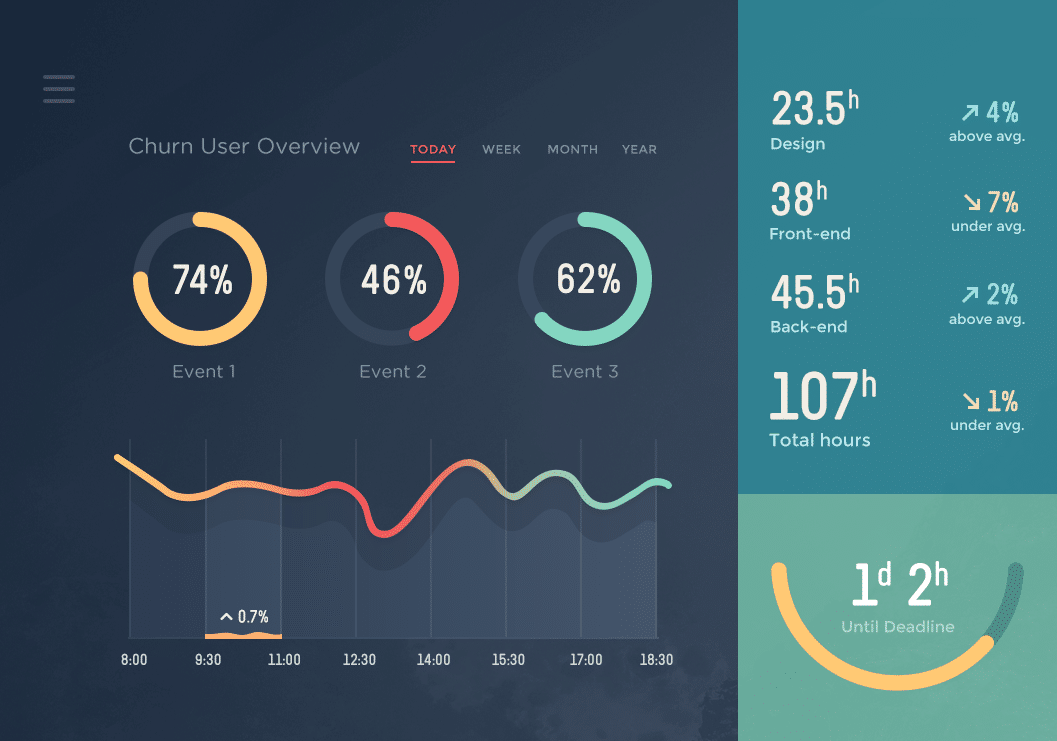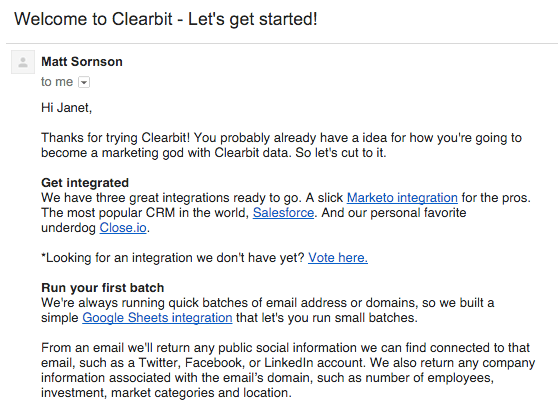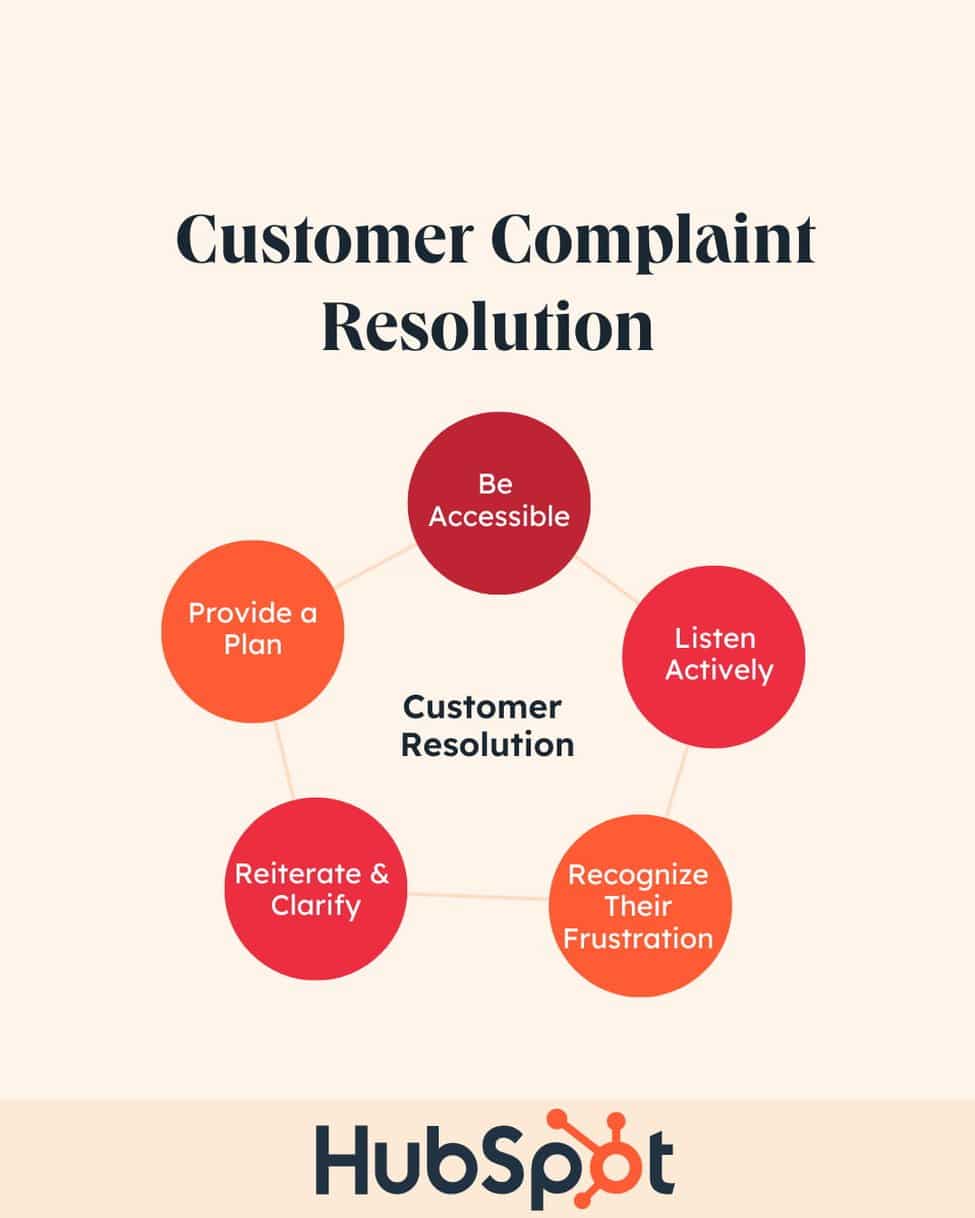User Engagement Strategies to Minimize Churn Rate
Every business in existence has lost a customer at some point. Even the most successful ones are familiar with customer loss. That’s why companies must design an effective user engagement strategy to minimize this problem as much as possible.
The problem in question is called customer churn. Some businesses deal with it by immediately looking for new customers to replace their loss. Others analyze customer churn rate to reduce its frequency.
Table of Contents
- What is customer churn?
- Importance of minimizing customer churn rate
- 10 User Engagement Strategies to Minimize Churn Rate
- #1. Conduct customer churn analysis
- #2. Monitor user interaction
- #3. Target the right audience
- #4. Provide personal customer communication
- #5. Reward customer loyalty
- #6. Provide excellent service
- #7. Prioritize complaints
- #8. Showcase your competitive edge
- #9. Propose long-term contracts
- #10. Implement Gamification in your product design
- Conclusion
- Machine Learning In Finance: 12 Essential Applications
- How To Create Interactive Compliance Training For Bank Employees
- How Fintech Apps Are Using Gamification To Increase User Engagement
- Top Gamification Companies for Employee & Customer Engagement
What is customer churn?
The customer churn rate is the number of customers who have stopped using a certain product after a while. It’s often interpreted through percentages. So if you have 500 engaged users by the start of the month, but only 415 remain by the end, your churn rate is 18%.
Even though the churn rate represents a loss in your business, a certain amount each period is inevitable. Your users’ needs consistently shift, and some competitors are focused on stealing them away. Churn analysis can help you plan for revenue loss that results from customer churn.
However, knowing your churn rate is not enough to help your business. It’s much better to solve this problem by measuring user engagement to retain your customers. Keeping the churn rate low and developing customer retention strategies is the better way to go.
Importance of minimizing customer churn rate
The churn rate is equivalent to a loss in your business revenue. The more customers that stop doing business with you, the more your overall sales will be hit.
On the other hand, the more you keep your churn rate to a minimum, the more your active user base will grow. This means more revenue for your business.
Some companies become complacent when new customers come in, only to lose more than half of them after some time. It’s important to remember that retention is as critical as attracting new customers. You can’t achieve growth if the number of customers that leave cancels out the number of new customers coming in.
Minimizing churn rate should always be your priority because it can result to:
- Increased subscription rates
- Increased business opportunities
- Extended customer lifecycle
A low churn rate can also help you determine the level of satisfaction of your customers. This information can tell you how successful your product development and user engagement are.
People won’t keep using a product that they don’t enjoy. So if your customer churn rate is low, it just means that you are providing a quality product experience.
So, how can you minimize the churn rate?
10 User Engagement Strategies to Minimize Churn Rate
#1. Conduct customer churn analysis
To reduce the churn rate, it’s important to understand why it’s happening fully. Remember that the reasons for customer churn today may not be the same as yesterday’s and tomorrow’s reasons. Keeping this piece of information in mind will help you understand your customers better.

Source: revenera
Many effective web analytics tools will update you on movements in your churn rates. Google Analytics, for example, can alert you if there are serious increases in your churn rate. However, understanding why will need a little more analysis on your part.
How to analyze churn rate
- Use SEO tools – To keep track of the trends in your market, you can use SEO tools to analyze which search terms are popular. Through this, you can ensure you are never behind the trends. You can determine the latest search terms and improve user engagement accordingly.
- Conduct exit-intent surveys – You can design exit-intent surveys to know what the customers’ reasons are for leaving your product. Through this feedback, you can make relevant updates to your product and find ways to improve retention.
- Gather user feedback – Through user feedback, you can gather customer insight about their exploration within your product. You can place feedback opportunities throughout the customer journey and gather useful feedback for each stage of their lifecycle.
#2. Monitor user interaction
The key to customer retention is monitoring users’ interaction with your product. Understanding customer behaviour will give you a visual of your product’s potential to engage with customers.
User interaction can range from direct user engagement, like emails and newsletters, to creating an excellent product experience. The more you interact with your active users, the more likely they will trust you and become loyal customers.
By showing your customers how your product adds quality to their lives, you give them reasons to return. You can achieve this by developing a product that can be a part of their daily workflow.
Ways to monitor user interaction
- Track user engagement metrics – There are key user engagement metrics to keep an eye out for when monitoring user interaction. This includes bounce rate, exit rate, and average session duration. By tracking these metrics, you can investigate what’s causing a dip in user engagement and how to improve it.
- Monitor user sessions – Through monitoring user sessions, you will find out how your customers engage with the critical elements of your product. You will also discover where they usually get stuck and at which part they lose interest. You can use this information to optimize your landing pages and update your product.
Here are the 5 most important user engagement metrics to track.
#3. Target the right audience
This strategy is critical because there are instances where a product is very well-optimized but still can’t retain its users. This is simply because they are targeting the wrong audience.
If you attract your customers by using keywords like “cheap” or “free”, you are already on the wrong track. Attracting customers who are looking for the cheapest, and often low-quality, solutions to their problems is not the way to go. These people are not looking for the quality your product provides
Target those customers who are looking for the long-term value your product has to offer. It may take you some time to attract these high-quality users, but they are the ones easiest to retain.
#4. Provide personal customer communication
According to research, 71% of customers expect personalized interactions.
Providing your active and engaged users with a personalized message gives them the impression that you value their experience. This alone can boost customer loyalty.

Source: appcues
You can engage with customers through constant product updates or rouse their interest with informative and valuable content. Personal user engagement is the key to decreasing churn rate and increasing retention.
How to engage in personalized customer communication
- Send personal emails and SMS – You can personalize your customers’ emails and SMS through their previous purchases. Once your user signs up for your product, you can send them a message to thank them for signing up. Additionally, you can also urge them to check out similar products to increase product adoption and user engagement.
- Provide a live chat or chatbots – If your customer has questions about your product, having chatbots will stop them from looking for answers elsewhere.
#5. Reward customer loyalty
One of the foolproof ways of minimizing churn is showing your customers that they are valued and rewarding them. With stiff competition, customer loyalty can sometimes be hard to achieve. That’s why it’s important to think of creative ways to reward, inspire, and retain your customers.
How to reward customer loyalty
- Implement a loyalty program – This strategy is designed to reward customers based on a pointing system. You can provide targets and challenges for them to accomplish as they go through the customer journey. Once they’ve accomplished a certain target, you can offer them rewards and incentives.
- Offer a referral bonus – Net Promoter Score (NPS) can calculate user engagement and predict business growth. The more your customers recommend your product, the more your NPS increases. By offering a referral bonus, you can improve your NPS and gain new customers.
- Send promotional emails and discounts – You can reward customer loyalty by giving them special deals and promotions. This will encourage them to check out your other products and make another purchase. Through this, your customers will likely stay loyal not only to your product but your brand.
Keep in mind that the cost of rewarding customer loyalty should not outweigh the profit you gain from said customers.
#6. Provide excellent service
This strategy may be the most obvious one because customer loyalty can be a direct result of excellent service. In fact, 42% of customers say poor customer service affected their decision to stop using a product.
According to research, most customers will refuse to use a product again after only one negative customer experience. And almost half of them will tell this negative experience to their family and friends. With this in mind, you should never underestimate the effect poor customer service will have on your business.
Providing excellent service is so obvious yet wildly overlooked. Your goal is to make sure you provide top-notch customer service that will stand out among competitors.
#7. Prioritize complaints
Customer complaints are a reflection of errors and mishaps within your overall service. However, it’s still as important as positive product feedback.
Did you know that the majority of your unsatisfied customers don’t complain? They simply quit using your product and never come back. That’s why it’s important to prioritize the few complaints that customers file.

Source: hubspot
By analyzing user complaints, you can uncover many related issues from customers who haven’t filed.
To encourage users to bring their issues to the table, you can send scheduled surveys throughout their experience. Make sure to curate your questions carefully so as not to make it too long and hassle your customers. Another way to encourage your customers is to offer incentives and prizes for each survey they accomplish.
#8. Showcase your competitive edge
Your competitive edge is the advantage you have over your competitors. How different you are makes you stand out to your customers. If you have an edge against competitors, flaunt it for your customers to realize what they have to lose.
To know what your competitive edge is, analyze your whole business and determine what you do better than similar brands. Once you’ve figured that out, ask yourself if your customers know about it.
If not, then it’s about time you reveal it to them.
#9. Propose long-term contracts
With long-term contracts, you are guaranteed your customers’ commitment. You can offer monthly contracts but also provide a choice for a longer subscription. This way, your users will have ample time to use your product and notice how it benefits them.
Once they see how your product benefits them, there is a bigger chance for them to commit.
#10. Implement Gamification in your product design
Gamification is the strategy of implementing game elements into non-game setups. Successful businesses like Duolingo use this user engagement strategy to increase their engagement rate. This is because gamification is an effective tool to increase customer engagement and motivation.

Source: duolingo
It boosts your customer’s enjoyment of your product through competition, rewards, and overall engagement.
Gamification strategies to increase retention
To boost user engagement and retention, you must understand your customers. Design your gamification strategy based on customer behaviour. Here are some of the most effective gamification designs you can use:
- Point systems – Earning points is the simplest yet most effective gamification strategy. You can base the pointing system on purchase behaviour. The more products they purchase, the more points they can earn. The points will eventually add to rewards they can redeem in your store.
- Achievement systems – With this approach, users can only earn prizes once they have accomplished a certain milestone. You can implement a tiered formula where they can earn more rewards through increased user engagement. With an achievement system, you can track how much your customers have engaged with your product or website.
- Competition systems – It’s no secret that competition drives us humans to achieve greater than what we had hoped for. You can implement this in your business by giving your users a platform where they can compete. You can feature the best customers on a leaderboard that updates their scores and ranking daily.
How to use gamification to decrease churn rate
- Reward user interaction – You can level up user interaction through game mechanics. You can set daily targets for them to accomplish and earn rewards from. Trust me. It will be harder for your customers to churn if they work towards a goal.
- Engage through winnable games – It is one thing to implement gamification to your product and another to ensure those games are winnable. You need to motivate your users to keep going by giving them chances to win. Gamification will only be effective if you give your users a sense of accomplishment.
- Reward customer loyalty – As mentioned earlier, rewarding customer loyalty can enhance user engagement. You can also implement gamification to this strategy and recognize weekly milestones through points and rewards.
- Make it social media friendly – Social media has become a big part of our daily lives. To engage with your users further, make your games social media and mobile friendly. This way, users can share their achievements with their family and friends. Additionally, you can gain new users with this feature.
- Implement progress bars – Keeping your games progress-oriented will certainly increase user engagement and minimize churn rate. You can motivate your users with badges they are yet to obtain. Design a progress bar for your users to see what they have accomplished and visualize what awaits them.
Click here to see the complete list of gamification examples.
Download your free
“Gamification Guide”
Get your PDF now and start transforming your approach to digital engagement!
Conclusion
Now that it’s clear that losing customers is a very big deal, it’s time for you to improve user engagement. Focus on standing out among competitors and keeping your customers excited to use your product. This means your customers must see why it’s much better to keep using your product instead of quitting.
Being proactive in keeping your customers satisfied will minimize the churn rate. Keep developing your product and curating the features your product has to offer.
82% of companies say that focusing on retention is way cheaper than acquisition. So don’t be afraid to spend a little money upgrading your website to make it more engaging to new users.
Retaining customers is no mystery. All you have to do is analyze why customers churn and act on it. Consistently communicate with your customers and ask for their feedback, complaints, and suggestions to keep your product development process updated.
Lastly, provide excellent customer service and implement gamification to keep user engagement high.
To know more about how gamification can increase user engagement and retention, request a demo with Mambo today!
Latest Posts
Machine Learning In Finance: 12 Essential Applications
The impact of machine learning on finance is significant. Thanks to this technology, financial institutions are now equipped to make efficient decisions. Through the analysis of data sets, machine learning […]
How To Create Interactive Compliance Training For Bank Employees
Banking compliance training isn’t just another task. It’s the stage where everything else performs. Banks must navigate a myriad of regulations and laws. After all, this is a trust-driven, high-stakes […]
How Fintech Apps Are Using Gamification To Increase User Engagement
Discover how gamification in fintech is revolutionizing financial engagement, making banking fun & boosting user loyalty.





